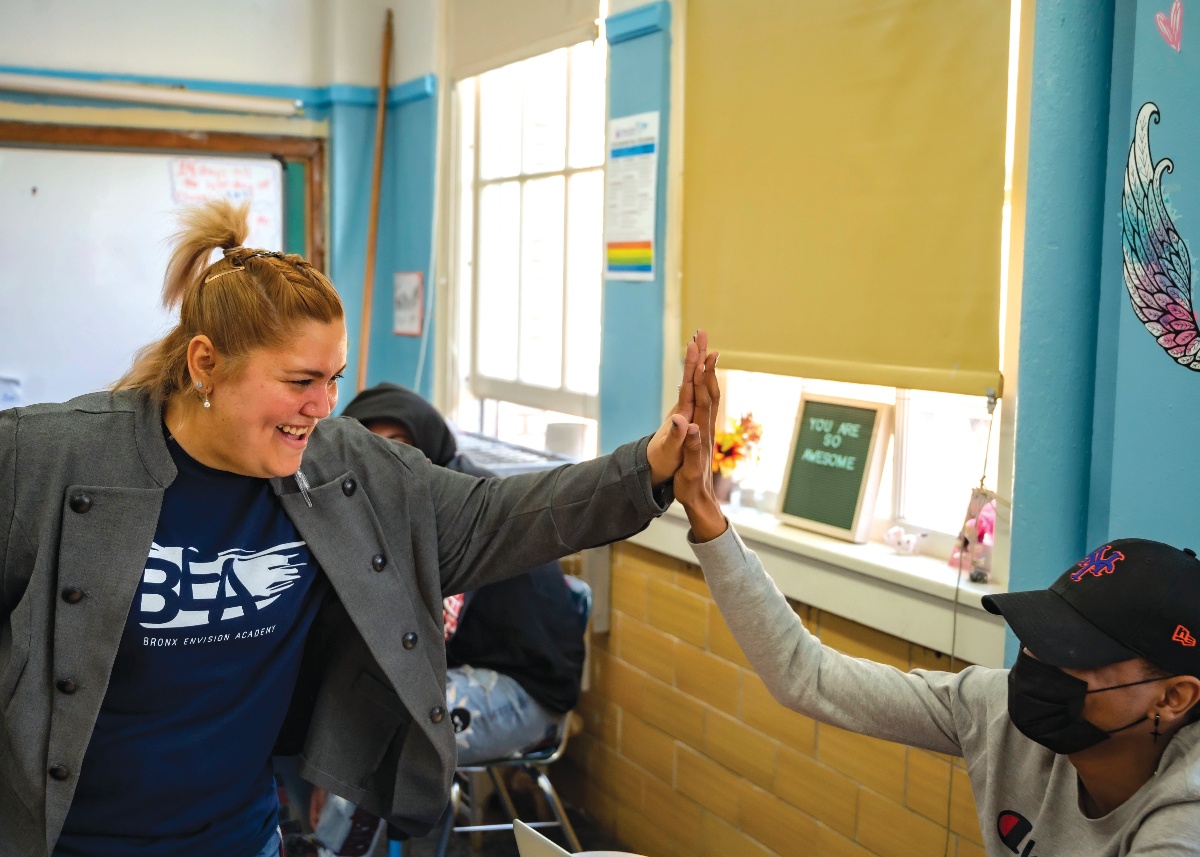If you're reading this, you probably know as well as us that strong connections between teachers and students are the backbone of a successful and supportive school environment. You’re also aware that administrators play a critical role in ensuring that teachers are capable of building authentic, nurturing bonds with their students that will help them thrive.
Building strong, positive relationships is a vital skill that can be developed. On your staff, you may have teachers who are natural relationship-builders, some who struggle, and many somewhere in between. Helping staff, wherever they are on their learning journeys, is essential to their long-term growth and students' success.
Based on years of supporting Wayfinder and other curricular implementation across schools and districts, here are a few tips for administrators supporting their teachers with relationship-building.
1. Build a Culture of Connection
Be open and authentic with your teachers, just as you ask them to be with students. Having an open-door policy and demonstrating your willingness to do what you ask teachers to do takes a lot of effort and energy, but it pays dividends in supporting your teachers and your overall campus culture.
However, relationship-building doesn't mean overstepping personal space. Connect with your teachers, but also define healthy, realistic limits as models for interacting with students. Model vulnerability and humility, but be mindful of burnout. Establish and communicate your boundaries, showing teachers it's healthy to do the same.
You can show teachers how to share appropriately while maintaining healthy boundaries using Wayfinder activities like Imaginary Potluck or Passion Swap, which encourage teachers to share aspects of their personal lives without stepping into uncomfortable territory. Through activities like these, your staff and students can create a shared vocabulary that resonates across different comfort levels and builds a common ground for teachers with different backgrounds and skill sets to operate on.
2. Embrace Modeling in the Classroom
Nothing says leadership like showing rather than telling. Why not step into the classroom yourself?
Invite yourself into classrooms to be a guest facilitator for community-building activities, demonstrating firsthand how to build and foster relationships. Your presence in the classroom can encourage teachers, provide valuable learning opportunities, and emphasize the value you place on building interpersonal relationships and a caring classroom community.
When modeling, it is essential to create an atmosphere where teachers and students can be honest and vulnerable. Acknowledging that the adults on campus don't have all the answers can relieve pressure and lead to more authentic interactions. Above all, modeling yourself as a human first and a leader second can go a long way toward showing teachers how to build authentic connections.
3. Emphasize Learning and Growing as a Team
In school, we're all on the same team. Administrators are lead learners among their staff, and staff are lead learners among their students, but everyone is moving toward the common goal of student success and well-being.
One part of bringing everyone on board as a team is co-creating your school’s vision and securing teacher investment in building a supportive school community (and any other initiatives your school is working toward). This helps remind teachers that they're part of something bigger than their day-to-day routines and that the relationships they build are part of a larger vision for student success and well-being.
With a unified vision in place, it’s important to move forward with transparent planning to implement a human skills development curriculum like Wayfinder. A successful implementation plan is transparent and well-aligned with your school's goals and concurrent initiatives. As you craft and explain this plan, be intentional with your choices and provide teachers with tools and activities they can apply immediately to remove any potential barriers to entry.
4. Emphasize Human Skills as a Pathway to Success
Human skill development isn't just a "nice-to-have," and it’s important for teachers to understand this. The fundamental skills taught by curriculum like Wayfinder are crucial for academic success—especially in high school, where academic content can dominate.
Just as we embed a Wayfinder Why in each of our lessons, make sure to identify, explain, and regularly remind your staff of the Why behind your school’s human skill development programming. Use PD time to demonstrate how it ties into sound pedagogical practices. For instance, we know collaborative group work is good for students’ development. Explicitly teaching belonging skills enhances group collaboration, fosters greater self-awareness, and helps students reach their goals.
In your training and professional development, showcase real-life applications of human skills. The skills Wayfinder teaches aren't just soft skills—they're durable, future-ready abilities in demand by today’s biggest employers. Teachers still working to understand how human skill development fits into academic instruction will appreciate this practical connection.
5. Use Resources to Scaffold Strong Relationship-Building Skills
We all have different comfort zones in building relationships. The key is guidance, and Wayfinder’s learning tools offer the building blocks for forming healthy relationships.
Guiding teachers on what to do (not just what to avoid) fosters confidence and connection. Particularly in recent years, though, much of relationship-building guidance focuses on what teachers shouldn’t do rather than providing tips or resources for building classroom connections.
Programs like Wayfinder provide you and your staff with practical steps to take to build classroom relationships, whether this is a new skill or a practiced one. Teachers naturally build their relationship skills by simply doing the curriculum and activities while guiding students to build their own.
Building strong relationships and a culture of belonging is a journey you and your staff will walk together. Fostering belonging is a collective effort that requires intention, empathy, and guidance, and Wayfinder is happy to be your guide. The connections we foster among our teachers and students are the bridges leading to success in both the classroom and life.





